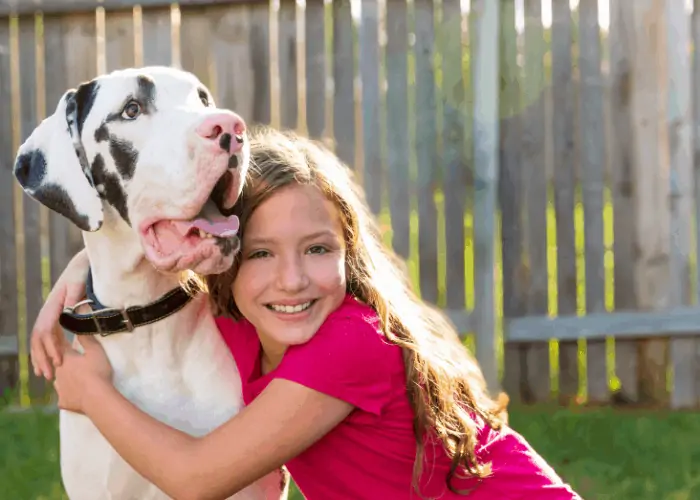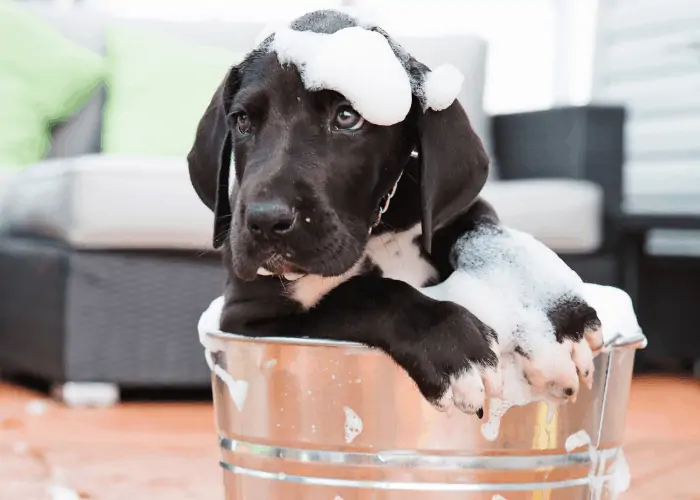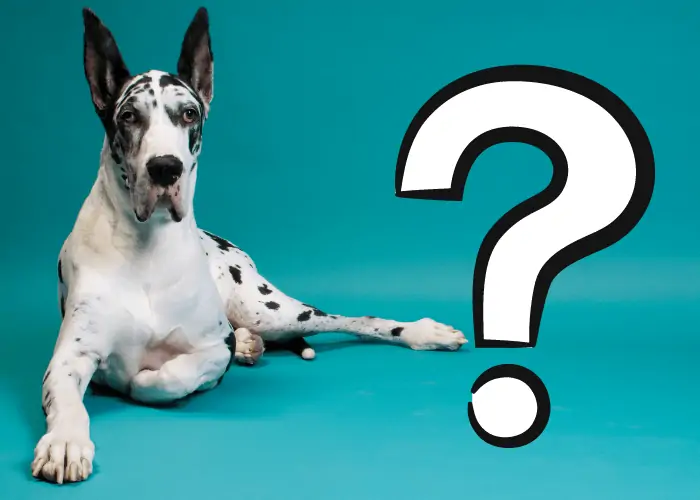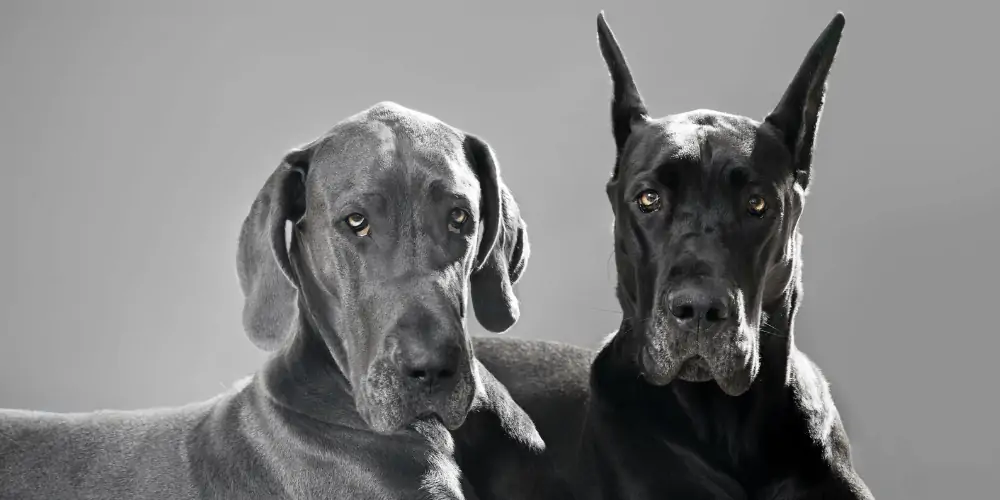The world record for the tallest dog is currently held by Gibson, a Great Dane standing 42.2-inches high. This, of course, is not a typical height for Great Danes; however, Great Danes are known for their incredible size.
Remember the loveable giant cartoon dog, Marmaduke? He was a Great Dane. Although he often acted clumsy and knocked people off their feet with his overly enthusiastic bounding, most Great Danes are agile, dignified, and very gentle.
The breed of Great Dane is ancient in comparison to other large breeds. Some believe that the Egyptians owned dogs of this breed (or resembling them) as early as 3000 B.C.E. Over 400 years ago, Great Danes were bred to hunt wild boar in Germany.
Appearance

The Great Dane is a huge, well-developed, evenly built dog with a big rectangular head and drop ears that can be cropped erect or left natural. The muzzle is deep, with a pronounced stop.
The nose is black, blue/black. The eyes are almond shape, and its tail is long and tapered. The well-arched neck is set high, firm, and muscular. The height of the Great Dane is around 28-32 inches. The weight of these dogs is 100-140 pounds.
Male Great Danes typically have larger, thicker bodies than their female counterparts. AKC-accepted coat colors include fawn, brindle, blue, black, harlequin, and mantle. A Great Danes portions from height to length should form a near-perfect square.
Sometimes owners crop the dogs’ ears to make them stand erect, a look prized in show dogs. In the past, the ears were cropped to prevent injury to the ear while boar hunting. These days it is entirely unnecessary to crop a Great Dane’s ears.
Temperament

Great Danes are also known as German Mastiffs. They are usually very well-behaved around people and other dogs. There are exceptions to this generalization; some Great Dane dogs can become territorial and aggressive. It is important to notice this behavior if it appears in your dog and nips it in the bud with stern discipline.
The Great Dane is determined, courageous, friendly, playful, and reliable. It is an impressive guard dog if it stands still and barks. When raised with them, the Great Dane is good with children, although it may be too overwhelming for younger ones. It is usually friendly with other dogs and pets but should be supervised. With proper training, it makes an enjoyable, well-mannered family companion.
Life expectancy
The life expectancy of the Great Dane is around 7-10 years.
Health problems
Great Danes’ major concerns are Bloat (gastric torsion), cardiomyopathy, and osteosarcoma. Some other concerns include hip dysplasia, hypothyroidism, CVI (wobbler syndrome), bone cancer, and CHD (Canine hip dysplasia).
Care & Grooming

The Great Dane requires daily exercise; however, it is essential not to over-exercise this breed, particularly the young. Maintaining a good nutritional diet; special attention should be paid not to overfeed them. It is better to feed two or three small meals a day than one large meal to avoid gastric distortion.
The Great Dane short coats require minimal grooming and Occasional brushing to keep his coat looking good all year. Brush with a firm bristle brush and dry shampoo occasionally. Bathe in mild soap only when necessary.
The Great Danes is an average shedder and are not suited to those with allergies.
Is Great Dane the Right Dog Breed for Me?

A giant dog brings enormous responsibilities! You may want to think twice before considering this breed, as they can be very messy, and some of them drool.
The Great Dane is best suited to those with some experience of dog ownership, as they can be stubborn and bossy sometimes. Training should be consistent and firm. They are playful and patient with children.
They love everyone and need to be around people. This breed is often referred to as a gentle giant. The Great Dane will do okay in an apartment if it is sufficiently exercised.
They are relatively inactive indoors, and their needs can be met with a good daily walk. They are best suited to divide their time indoors and out and will do best with at least a large yard.



